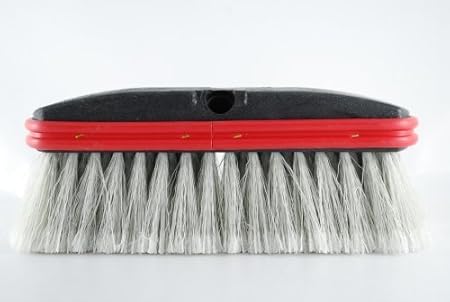So, you’ve tackled that grimy patio, wrestled with the stubborn deck stains, and finally conquered that algae-covered driveway. Your trusty outdoor scrub brush has earned its stripes (and probably a good scrubbing itself!). But how do you properly clean this hardworking tool to keep it effective and extend its lifespan? This comprehensive guide will walk you through the best cleaning methods, depending on the type of brush and the mess you’ve tackled.
Why Clean Your Outdoor Scrub Brush?
You might be thinking, “It’s just a brush, it can handle a little dirt.” While true to some extent, neglecting proper cleaning has several negative consequences:
- Reduced effectiveness: A clogged brush won’t clean as well. Dried-on grime and debris will impede its ability to scrub surfaces effectively, requiring more effort and time on your next cleaning project.
- Mold and mildew growth: Damp brushes are breeding grounds for mold and mildew, especially if left outside or in a humid environment. This can not only damage the brush but also create unpleasant odors and potentially health hazards.
- Premature wear and tear: Dirt and debris trapped in the bristles can cause them to break or fray more quickly, shortening the overall life of your brush.
- Spread of contaminants: If you’ve cleaned areas with mold, mildew, or other contaminants, failing to clean your brush thoroughly could spread these to other areas during your next cleaning session.
Cleaning Methods for Different Types of Brushes

Outdoor scrub brushes come in various materials and designs. The cleaning method should be tailored to the specific type of brush you’re using:
Cleaning Plastic Brushes

Plastic scrub brushes are generally the most durable and easiest to clean. Here’s a step-by-step process:
- Rinse thoroughly: Use a garden hose or pressure washer (on a low setting to avoid damage) to remove loose dirt and debris. Focus on rinsing out the base and between the bristles.
- Soapy scrub: Fill a bucket with warm, soapy water. Use a dish soap or a heavy-duty cleaner if needed. Submerge the brush, gently working the bristles to loosen stubborn grime. A stiff-bristled brush can be used to clean itself.
- Rinse again: Thoroughly rinse the brush under running water, ensuring all soap residue is removed.
- Air dry: Allow the brush to air dry completely in a well-ventilated area. Hanging the brush upside down is ideal to promote proper drying and prevent water accumulation.
Cleaning Wooden-Handled Brushes

Brushes with wooden handles require a slightly gentler approach to prevent water damage:
- Rinse and scrub (as above): Follow the same rinsing and soapy scrubbing steps as for plastic brushes.
- Avoid soaking: Prolonged soaking can damage the wooden handle, causing it to warp or rot. Keep the soaking time brief.
- Dry thoroughly: Ensure the handle is completely dry before storing. Consider wiping it down with a dry cloth after rinsing to absorb excess water.
Cleaning Metal Brushes

Metal brushes often have stiffer bristles and can handle more aggressive cleaning. However, they also require extra care:
- Remove loose debris: Use a wire brush or similar tool to remove any large chunks of debris before rinsing.
- Rinse and scrub: Rinse and scrub the brush as described above, but pay special attention to removing rust or corrosion that might have built up.
- Apply rust remover (if needed): For heavily rusted brushes, apply a rust remover following the manufacturer’s instructions. Be sure to wear appropriate safety gear.
- Dry thoroughly: Thorough drying is crucial for preventing rust. After rinsing, allow the brush to dry completely before storing.
Dealing with Stubborn Stains
For extremely stubborn stains, such as dried-on paint or concrete, you may need to employ more aggressive cleaning methods:
- Soaking: Let the brush soak in a solution of warm water and a heavy-duty cleaner for several hours or overnight. (Avoid this for wooden handles).
- Bleach solution (use cautiously): A diluted bleach solution (always follow safety precautions!) can help remove mold and mildew, but only use this on brushes that can withstand it.
- Pressure washing (low setting): A pressure washer on a low setting can help dislodge stubborn debris, but keep the nozzle at a distance to avoid damaging the bristles.
Storage and Maintenance
Proper storage is crucial for maintaining the lifespan of your outdoor scrub brush:
- Store in a dry place: Avoid storing the brush in a damp or humid environment.
- Allow for air circulation: Ensure proper air circulation to prevent mold and mildew growth.
- Hang it up: Hanging the brush upside down allows water to drain and helps to prevent bristle damage.
- Regular cleaning: Aim to clean your brush after each use, or at least after each major cleaning project.
By following these simple steps, you can keep your outdoor scrub brush clean, effective, and ready for its next cleaning challenge. Remember, a clean brush is a happy brush (and a happy you!).